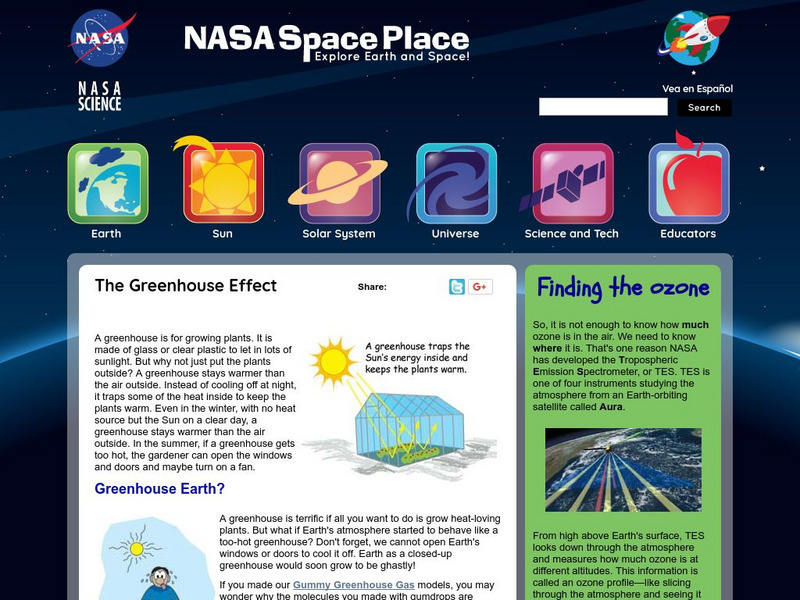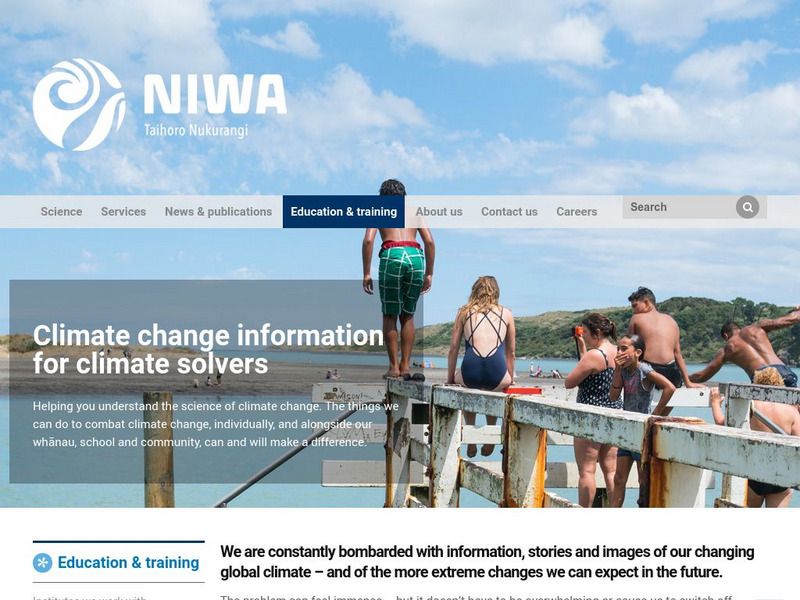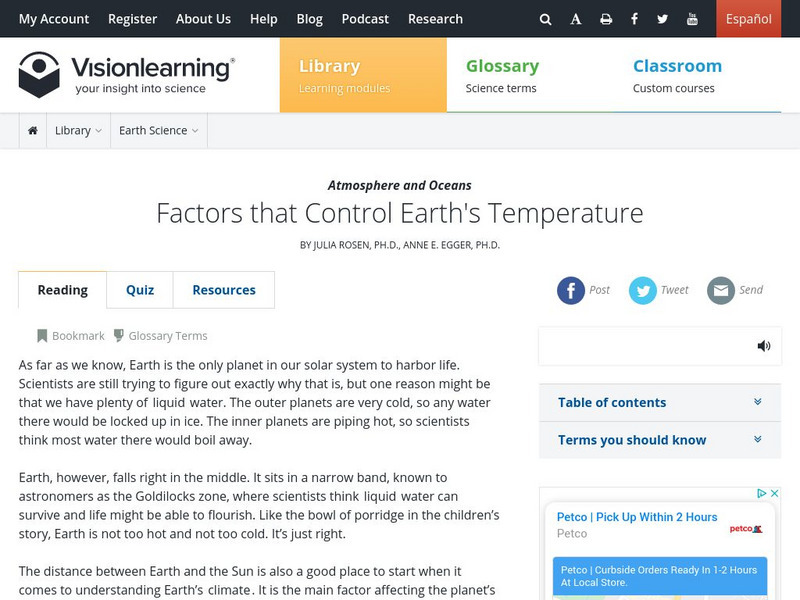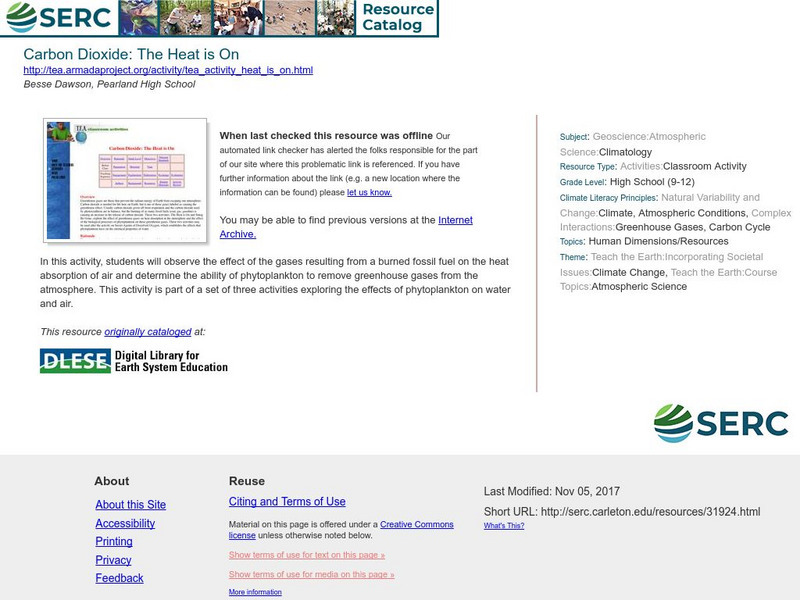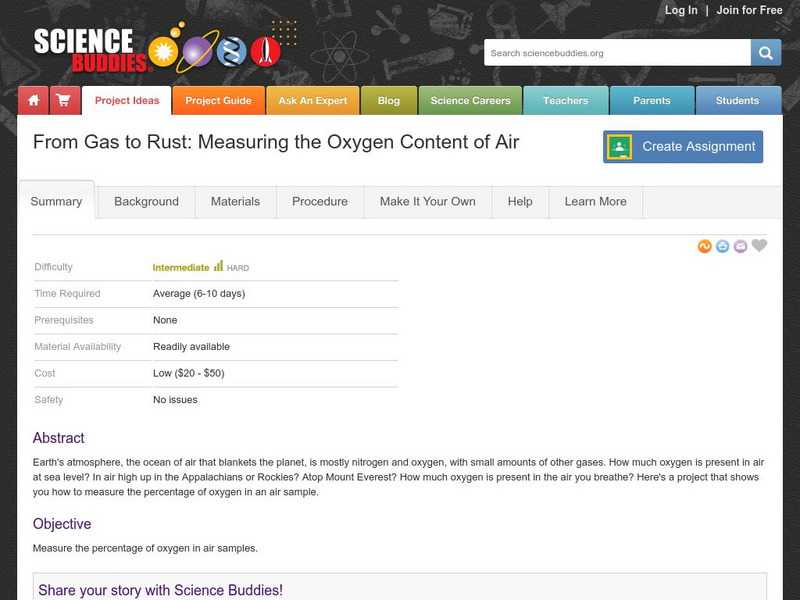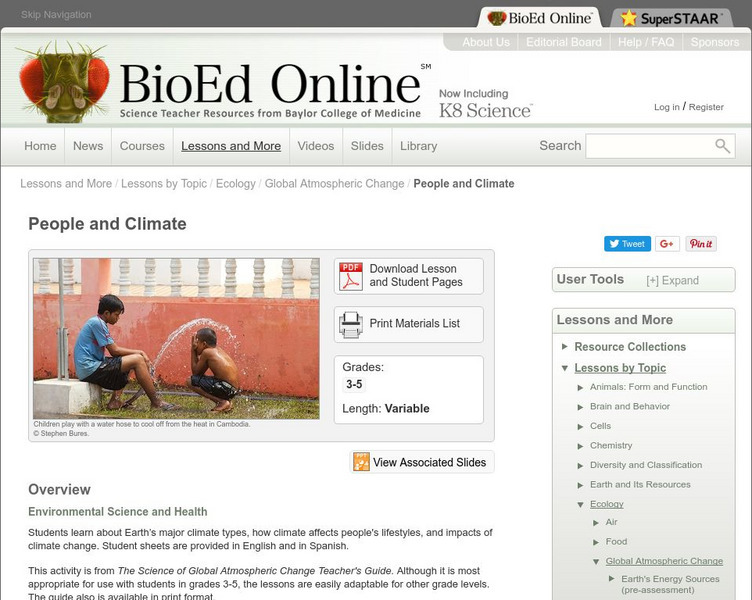Hi, what do you want to do?
PBS
Quest: How Do Greenhouse Gases Work?
Use this interactive infographic to learn about the function of greenhouse gases, and how they affect heat in the atmosphere.
King's Centre for Visualization in Science
Explaining Climate Change: Lesson 6: Greenhouse Gases: A Closer Look
This is the sixth lesson in a series of learning modules on the topic of climate change. It takes a look at the different important greenhouse gases in our atmosphere and some of the ways in which humanity is affecting the atmospheric...
NASA
Nasa: The Space Place: Life in a Greenhouse
Use this website to discover how the Earth acts as a greenhouse due to the production of greenhouse gases. Find out what ozone it, where it's found, and even view a video showing the different concentrations of ozone in the atmosphere.
Other
Niwa: Climate Change, Global Warming, and Greenhouse Gases
Want to learn more about climate change, global warming, and greenhouse gases? This web page contains links to websites around the world concerned with providing information about these. Topics include climate shift, greenhouse effect,...
BioEd Online
Bio Ed Online: Air, Atmosphere and Living Systems
This unit includes a complete set of science lessons that enable learners to creatively explore basic concepts related to air and the atmosphere, air quality, and associated issues, such as allergens in the places we live, study and work.
Exploratorium
Exploratorium: Ice Stories: Dispatches From Polar Scientists: Greenhouse Gases
Polar scientists offer an article identifying the research and observations made on greenhouse gases. Why is there so much carbon dioxide in the atmosphere today? Scientists work diligently to determine the causes and effects of these...
Vision Learning
Visionlearning: Atmosphere and Oceans: Factors That Control Earth's Temperature
An explanation of how temperature is affected by the composition of the atmosphere and how energy flows in and out of Earth's atmosphere.
Science Education Resource Center at Carleton College
Serc: Analyzing Greenhouse Gases and Global Temperature Data Over Time
In this activity, students plot data on the concentrations of various greenhouse gases in Earth's atmosphere and look for trends. They will learn that greenhouse gases allow the Sun's light to pass through them to the surface of Earth,...
Science Education Resource Center at Carleton College
Serc: Carbon Dioxide: The Heat Is On
In this activity, students will observe the effect of the gases resulting from a burned fossil fuel on the heat absorption of air and determine the ability of phytoplankton to remove greenhouse gases from the atmosphere. This activity is...
University Corporation for Atmospheric Research
Ucar: What Do Soda and the Oceans Have in Common?
Students will use soda to explore how carbon dioxide is able to dissolve into liquid. They will learn about Henry's law, which describes how the solubility of gas into liquids is dependent on temperature and develop hypotheses about how...
Vision Learning
Visionlearning: Earth Science: Earth's Atmosphere: Composition and Structure
Instructional module focusing on Earth's atmosphere. Discussion includes major components, layers, air pressure, and scientific monitoring of the atmosphere. Site also includes an interactive practice quiz and links relating to the topic.
Science Buddies
Science Buddies: From Gas to Rust: Measuring the Oxygen Content of Air
Earth's atmosphere, the ocean of air that blankets the planet, is mostly nitrogen and oxygen, with small amounts of other gases. How much oxygen is present in air at sea level? Is air high up in the Appalachians or Rockies? Atop Mount...
National Geographic
National Geographic: Interactions Within Earth's Atmospheres
Using computational models, students investigate the interaction between greenhouse gases, solar radiation, and the Earth's surface for the impact on climate. They then look at data on atmospheric carbon dioxide to analyze changes in...
University of Colorado
University of Colorado: Ph Et Interactive Simulations: The Greenhouse Effect
How do greenhouse gases affect the climate? Explore the atmosphere during the ice age and today. What happens when you add clouds? Change the greenhouse gas concentration and see how the temperature changes. Then compare to the effect of...
Concord Consortium
Concord Consortium: Stem Resources: Greenhouse Gases
Do you understand the relationship between temperature and carbon dioxide in our atmosphere? This computer model shows factors such as clouds and carbon dioxide that could cause global temperatures to rise. Students investigate how the...
Climate Literacy
Clean: Greenhouse Gases: A Closer Look
One lesson in a larger module covering different aspects of the major greenhouse gases including some of the ways in which human activities are affecting the atmospheric concentrations of these key greenhouse gases.
King's Centre for Visualization in Science
Explaining Climate Change: Lesson 3: The Chemistry of the Greenhouse Effect
This is the third lesson in a series of learning modules on the topic of climate change. It takes a look at how greenhouse gases cause warming and affect Earth's climate. Includes comprehension questions and interactive tools for...
CK-12 Foundation
Ck 12: Earth Science: Reducing Greenhouse Gas Pollution Study Guide
[Free Registration/Login may be required to access all resource tools.] This study guide summarizes key points about global efforts to reduce greenhouse gases in the atmosphere. Includes a few questions to check for understanding.
NASA
Space Math: Nasa Satellite "Sees" Carbon Dioxide [Pdf]
Using this map from NASA you can calculate the concentrations of carbon dioxide in the atmosphere. Solve the four problems and you will see how concentrations are spread across the globe and where there are regional differences.
BioEd Online
Bio Ed Online: The Science of Global Atmospheric Change: People and Climate
The impact that climate and climate change have on humans is explored in this activity. Students learn about climate zones, and factors that affect climate, e.g., proximity to the ocean and greenhouse gases. The activity and accompanying...
BioEd Online
Bio Ed Online: Finding the Carbon in Sugar
Students learn that fossil fuels release energy when they are burned, and this takes the forms of light, heat, gases, etc. In this instructional activity they explore combustion with a candle and with sugar. The instructional activity...
Sophia Learning
Sophia: The Biosphere: Lesson 2
This lesson will discuss the importance of the biosphere (the global ecosystem) to living things. It is 2 of 3 in the series titled "The Biosphere."
Sophia Learning
Sophia: The Biosphere: Lesson 3
This lesson will discuss the importance of the biosphere (the global ecosystem) to living things. It is 3 of 3 in the series titled "The Biosphere."
Sophia Learning
Sophia: The Biosphere: Lesson 1
This lesson will discuss the importance of the biosphere (the global ecosystem) to living things. It is 1 of 3 in the series titled "The Biosphere."







